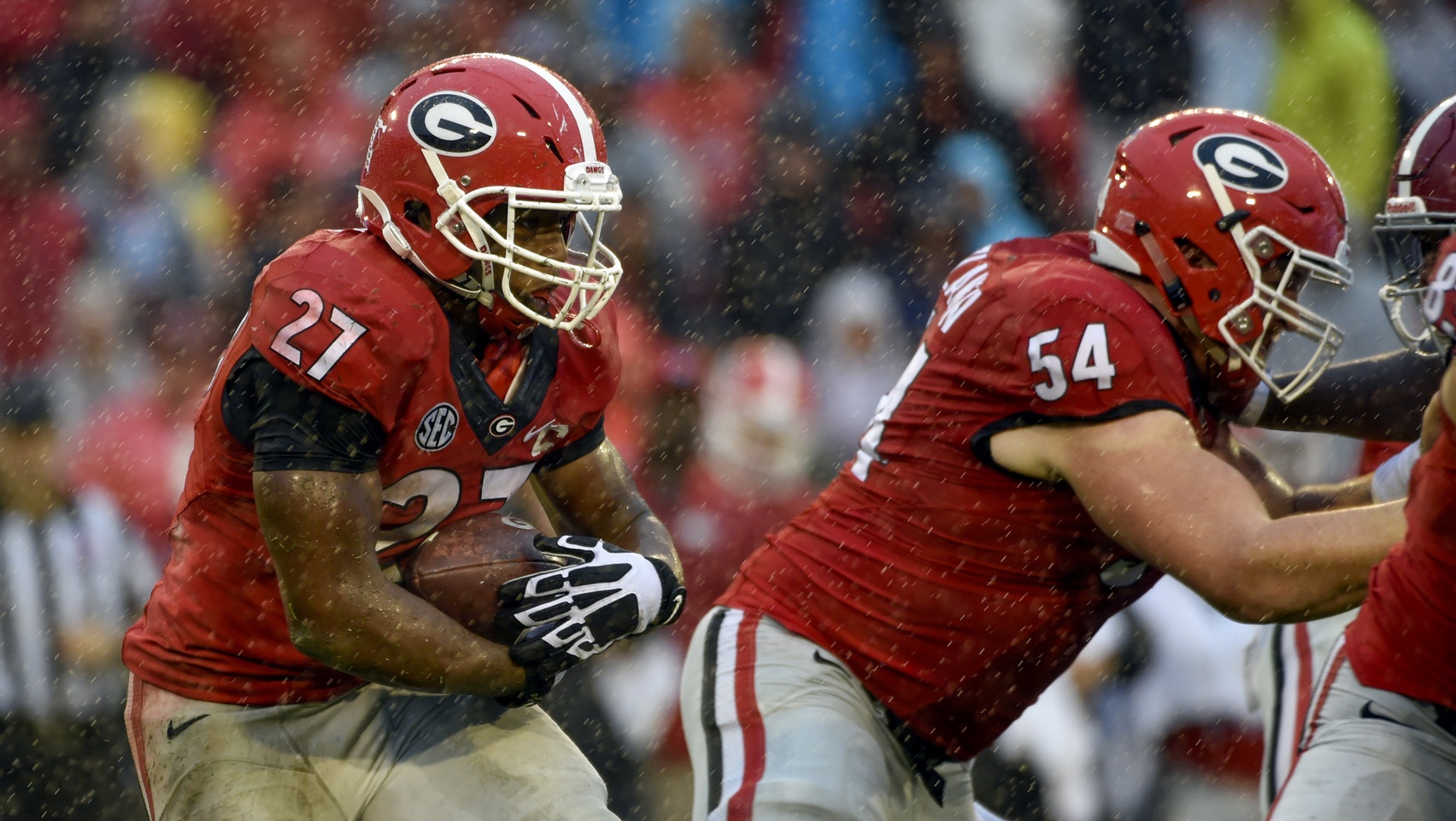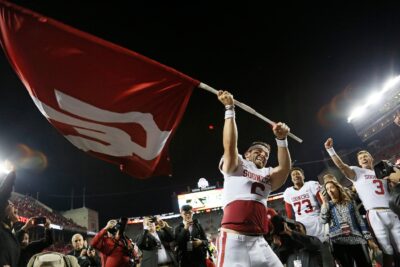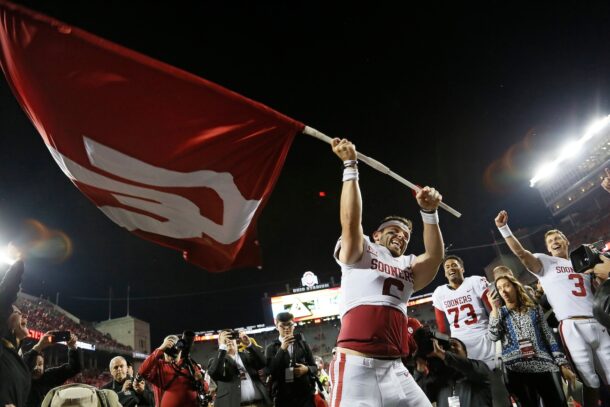
The 2015 season was one of the most exciting for SEC running backs since Bo Jackson and Herschel Walker graced the conference.
And that’s despite Todd Gurley’s early entry into the 2015 NFL draft and Nick Chubb’s knee injury.
The depth wasn’t as strong as it has been, but there were a handful of elite backs at the top. Alabama’s Derrick Henry, the Heisman Trophy and Doak Walker Award winner, declared for the NFL draft Thursday. Arkansas’ Alex Collins also is headed to an NFL team.
Next season, the SEC has a chance to retain its historically-strong top while improving its depth, especially if Bo Scarbrough and Jovon Robinson perform like the stars that Alabama and Auburn fans are used to watching.
The incoming running back class isn’t as touted as the quarterbacks. But players like B.J. Emmons (Alabama), Devwah Whaley (Arkansas) and Elijah Holyfield (Georgia) should eventually be big contributors.
Taking into account only returning players, here are the 10 best running backs in the SEC for 2016.
10. Peyton Barber, Auburn: Early in the season, when almost nothing worked for the Auburn offense, Barber kept the ship from sinking completely. His five-touchdown performance against San Jose State was beautiful. But in his final six games, he scored just one touchdown. Going back further, in his final eight games, Barber rushed for 57.4 yards per contest and averaged 4.0 yards per carry. Ideally for Auburn, Barber is a dependable backup. He’s not as athletic as Jovon Robinson, but he’s a smart player who makes the most out of his ability. He makes this list mainly because he scraped past 1,000 rushing yards during the Birmingham Bowl.
9. Alvin Kamara, Tennessee: The two-headed monster of a backfield never really materialized in Knoxville, as coach Butch Jones couldn’t find reasons to take away touches from Jalen Hurd. Kamara averaged just 10.8 touches per game. But he averaged 6.5 yards per carry, almost two yards more than Hurd. And he caught 34 passes in limited time, arguably the most productive receiver out of the backfield in the SEC on a per-snap basis. If the Vols let Kamara loose against opponents other than teams like Bowling Green and North Texas, he’s capable of staying on this list throughout the season.
8. Sony Michel, Georgia: The Plantation, Fla., product is a fine player. He’s produced more than 1,800 yards of offense and 17 touchdowns in his first two seasons despite the presence of Todd Gurley and Nick Chubb. He’s also played very well against Tennessee. But watch how defenses have aligned with Michel in the game vs. those other two stars. Teams just are not as intimidated by the 5-foot-11, 212-pound Michel. Ideally for Georgia, he serves as one of the best backups in the SEC, catching passes out of the backfield and getting Chubb some rest. But as a starter, he’s already proven he can run for 1,000 yards. Gurley and Chubb are otherworldly specimens, but Michel still is capable of being one of the best running backs in the SEC.
7. Bo Scarbrough, Alabama: Want to know why some people hate the Tide? Look no further than Scarbrough. Alabama loses Derrick Henry after he broke every relevant single-season rushing record in program history. Enter Scarbrough, as close to a clone of Henry as possible. He’s 6-foot-2 and 240 pounds. Though he tore his ACL during the offseason, he still managed 18 carries — enough to get a feel for the college game. He’ll have every opportunity to become Alabama’s No. 1 back in 2016. Expect the Tide to return to its typical buddy system, but even then, if Scarbrough leads the team in carries, he’ll have every opportunity to finish the season much higher than seventh.
6. Jovon Robinson, Auburn: One of the most heralded JUCO signees of the 2015 class, some predicted that Robinson immediately would follow Tre Mason and Cameron Artis-Payne as the team’s alpha back. Instead, reports out of Auburn indicated that it took him some time to learn the offense and get comfortable with his new team. Robinson got just four carries before Halloween. But he rushed for at least 90 yards in five of the last six games, surpassing Peyton Barber as the team’s lead back. No matter what happens at quarterback, I expect Auburn to return to its identity in 2016. This offense is best when it is running the football the majority of the time, with occasional downfield passes. Robinson stands to benefit most.
5. Boom Williams, Kentucky: The most explosive running back in the SEC in 2015 by many metrics, Williams managed to rush for 20 yards once every 8.6 carries. In other words, give him the ball 25 times per game and you can expect about three long runs. But Williams never has carried the ball for even 20 times in a single college game. In his five 100-yard performances last season, he ran 10, 14, 16, 13 and 16 times. Williams sometimes landed in coach Mark Stoops’ doghouse and also fought through an elbow injury. Despite being arguably the most productive player in the Kentucky offense the last two seasons, Williams got 225 touches — combined. Let’s hope new offensive coordinator Eddie Gran finds ways to get him the ball more often so we can see what Williams can really do.
4. Ralph Webb, Vanderbilt: Playing in one of the least-effective offenses in recent SEC history, Webb still managed 1,340 yards of total offense as a true sophomore. That included 99 yards against Missouri and 118 yards against Florida, two of the best rushing defenses in the conference. He’s the least intimidating of the SEC’s top backs from a physical standpoint. But Webb is among the most polished. He tied for third on the team in receptions last year. He just needs to find the end zone a little more often — he ran for just 5 touchdowns in 2015 despite 1,152 rushing yards.
3. Jalen Hurd, Tennessee: At 6-foot-4 and 240 pounds, Hurd runs as hard as any back in the SEC. He needs to get more explosive — Derrick Henry and Leonard Fournette each logged 10 carries of at least 30 yards, compared to 4 for Hurd — but if you want to gain 4 and 5 yards per carry between the tackles with a player who is going to make opposing linebackers wish the game would end, Hurd is your man. Plus, he’ll be a true junior this season, so he still has a chance to pick up more nuances. He’s an effective receiver as well, and if Tennessee develops a downfield passing game, look out. Hurd should get a lot of second-half carries in 2016 as the Vols try to close out games.
2. Nick Chubb, Georgia: In the 13 games before his brutal knee injury, Chubb rushed for 2,068 yards on 7.4 yards per carry and scored 21 total touchdowns. In other words, he would’ve been in the same conversation with Derrick Henry and Leonard Fournette at the end of last season. (In fact, his career yards per carry is nearly two yards better than Henry managed this year during his Heisman Trophy year.) If Chubb is 100 percent healthy, he has every chance to be the best running back in the country. But this was no simple ACL tear. Chubb tore three ligaments, including his posterior cruciate ligament, and damaged cartilage. According to a report at the end of December, Chubb is now walking without a limp, but he still “has a lot of time to go before his football future truly can be discussed.” We’ll be optimistic here, considering Chubb is an athletic freak. But it’s far from guaranteed that he’ll be the same player.
1. Leonard Fournette, LSU: There were two main differences between Fournette and Derrick Henry in 2015: Henry never had to face Alabama’s rushing defense and LSU lost three games in November. Fournette’s 162.8 rushing yards per game far eclipsed Henry and ranked among the national leaders in the last decade. Most impressive in Fournette’s progression is that he learned to use all his physical tools. As a freshman, he preferred to run into whatever stood in front of him, even his own offensive linemen. In 2015, he still ran over defenders, but showed vision, patience, speed and balance as well. All that despite disrespect for the team’s passing game and a down year for LSU’s defense. Fournette managed to keep the Tigers in contention for a College Football Playoff spot into November almost singlehandedly.
An itinerant journalist, Christopher has moved between states 11 times in seven years. Formally an injury-prone Division I 800-meter specialist, he now wanders the Rockies in search of high peaks.







